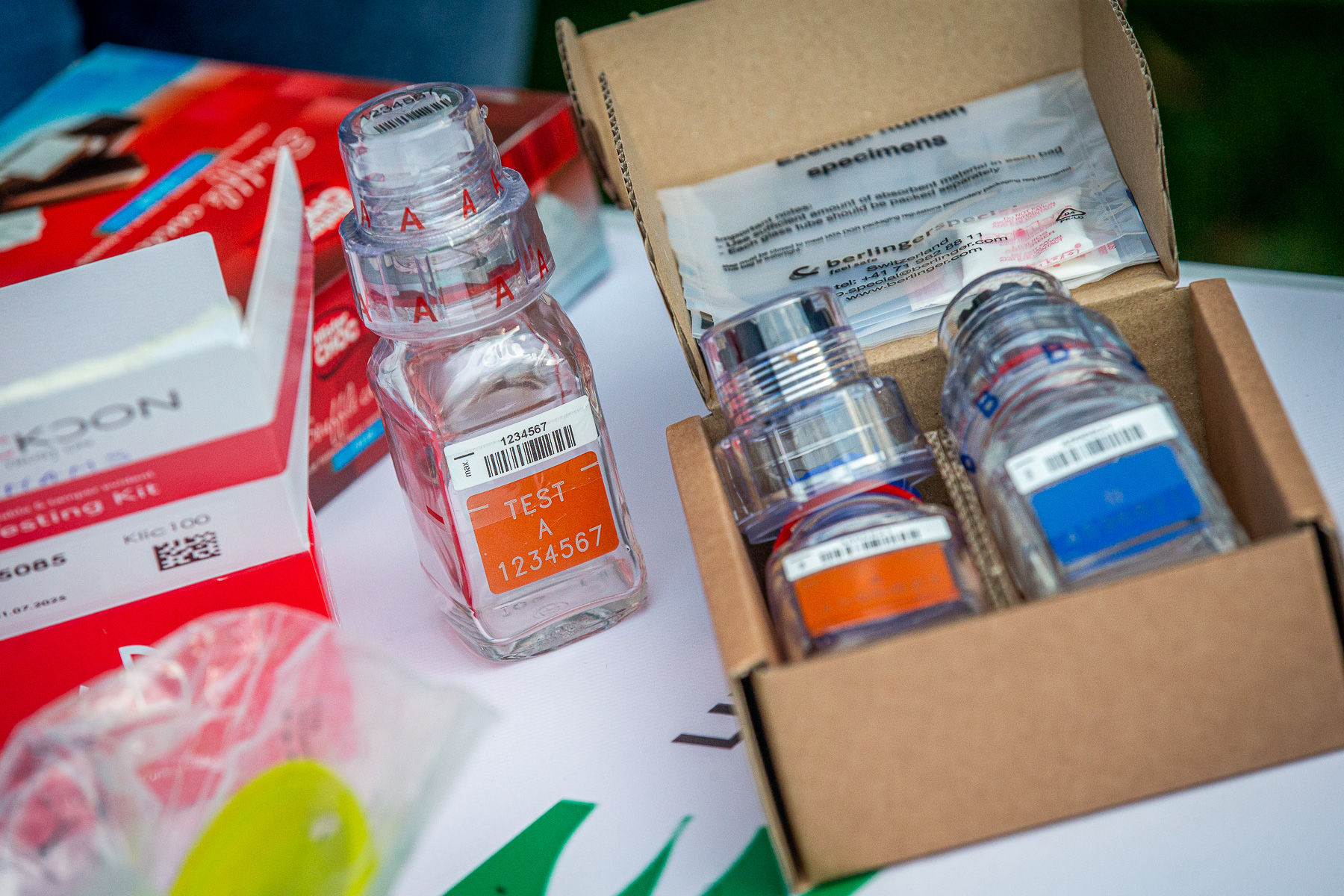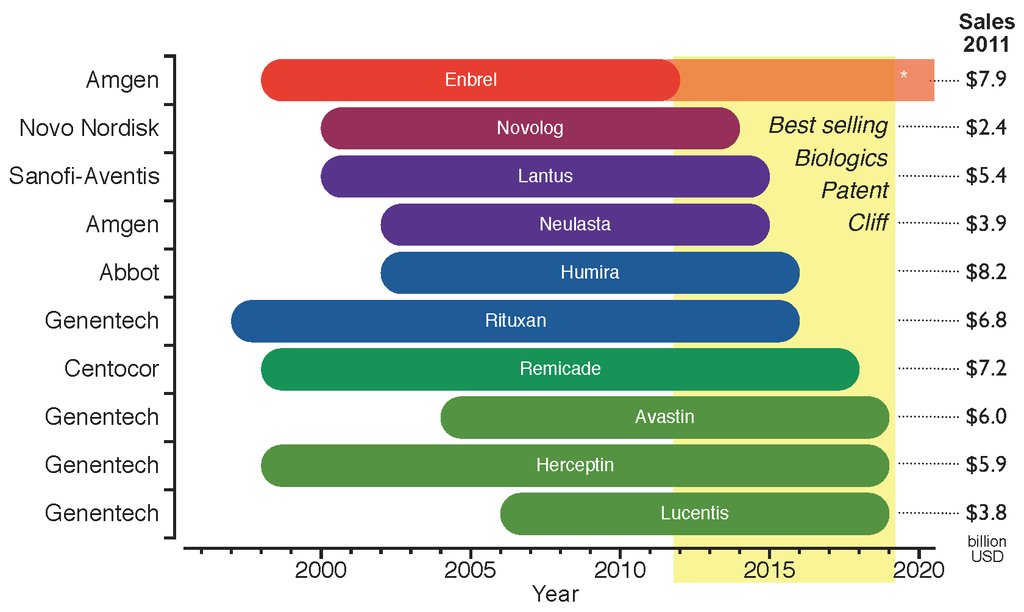|
Erythropoiesis-stimulating Agents
Erythropoiesis-stimulating agents (ESA) are medications which stimulate the bone marrow to make red blood cells. They are used to treat anemia due to end stage kidney disease, chemotherapy, major surgery, or certain treatments in HIV/AIDS. In these situations they decrease the need for blood transfusions. The different agents are more or less equivalent. They are given by injection. Common side effects may include joint pain, rash, vomiting, and headache. Serious side effects may include heart attacks, stroke, increased cancer growth, or pure red cell aplasia. It is unclear if use is safe during pregnancy. They work similar to naturally occurring erythropoietin. They were first approved for medical use in the United States in 1989. It is on the World Health Organization's List of Essential Medicines. Commercially available agents include epoetin alfa and darbepoetin alfa, and biosimilars. Use among athletes is prohibited by the World Anti-Doping Agency. Medical uses ESAs ar ... [...More Info...] [...Related Items...] OR: [Wikipedia] [Google] [Baidu] |
Erythropoietin
Erythropoietin (; EPO), also known as erythropoetin, haematopoietin, or haemopoietin, is a glycoprotein cytokine secreted mainly by the kidneys in response to cellular hypoxia; it stimulates red blood cell production (erythropoiesis) in the bone marrow. Low levels of EPO (around 10 mU/mL) are constantly secreted in sufficient quantities to compensate for normal red blood cell turnover. Common causes of cellular hypoxia resulting in elevated levels of EPO (up to 10 000 mU/mL) include any anemia, and hypoxemia due to chronic lung disease. Erythropoietin is produced by interstitial fibroblasts in the kidney in close association with the peritubular capillary and proximal convoluted tubule. It is also produced in perisinusoidal cells in the liver. Liver production predominates in the fetal and perinatal period; renal production predominates in adulthood. It is homologous with thrombopoietin. Exogenous erythropoietin, recombinant human erythropoietin (rhEPO), ... [...More Info...] [...Related Items...] OR: [Wikipedia] [Google] [Baidu] |
Pure Red Cell Aplasia
Pure red cell aplasia (PRCA) or erythroblastopenia refers to a type of aplastic anemia affecting the precursors to red blood cells but usually not to white blood cells. In PRCA, the bone marrow ceases to produce red blood cells. There are multiple etiologies that can cause PRCA. The condition has been first described by Paul Kaznelson in 1922. Signs and symptoms Signs and symptoms may include: * Pale appearance * Rapid heart rate * Fatigue Causes Causes of PRCA include: Treatment PRCA is considered an autoimmune disease as it will respond to immunosuppressant treatment such as cyclosporin in many patients, though this approach is not without risk. It has also been shown to respond to treatments with rituximab and tacrolimus. See also * Diamond–Blackfan anemia (genetic red cell aplasia) * Aplastic anemia Aplastic anemia is a cancer in which the body fails to make blood cells in sufficient numbers. Blood cells are produced in the bone marrow by stem cells that reside ... [...More Info...] [...Related Items...] OR: [Wikipedia] [Google] [Baidu] |
Pure Red Cell Aplasia
Pure red cell aplasia (PRCA) or erythroblastopenia refers to a type of aplastic anemia affecting the precursors to red blood cells but usually not to white blood cells. In PRCA, the bone marrow ceases to produce red blood cells. There are multiple etiologies that can cause PRCA. The condition has been first described by Paul Kaznelson in 1922. Signs and symptoms Signs and symptoms may include: * Pale appearance * Rapid heart rate * Fatigue Causes Causes of PRCA include: Treatment PRCA is considered an autoimmune disease as it will respond to immunosuppressant treatment such as cyclosporin in many patients, though this approach is not without risk. It has also been shown to respond to treatments with rituximab and tacrolimus. See also * Diamond–Blackfan anemia (genetic red cell aplasia) * Aplastic anemia Aplastic anemia is a cancer in which the body fails to make blood cells in sufficient numbers. Blood cells are produced in the bone marrow by stem cells that reside ... [...More Info...] [...Related Items...] OR: [Wikipedia] [Google] [Baidu] |
Preterm Babies
Preterm birth, also known as premature birth, is the birth of a baby at fewer than 37 weeks gestational age, as opposed to full-term delivery at approximately 40 weeks. Extreme preterm is less than 28 weeks, very early preterm birth is between 28 and 32 weeks, early preterm birth occurs between 32 and 36 weeks, late preterm birth is between 34 and 36 weeks' gestation. These babies are also known as premature babies or colloquially preemies (American English) or premmies (Australian English). Symptoms of preterm labor include uterine contractions which occur more often than every ten minutes and/or the leaking of fluid from the vagina before 37 weeks. Premature infants are at greater risk for cerebral palsy, delays in development, hearing problems and problems with their vision. The earlier a baby is born, the greater these risks will be. The cause of spontaneous preterm birth is often not known. Risk factors include diabetes, high blood pressure, multiple gestation (being pregna ... [...More Info...] [...Related Items...] OR: [Wikipedia] [Google] [Baidu] |
ABIM Foundation
Choosing Wisely is a United States-based health educational campaign, led by the ABIM Foundation (American Board of Internal Medicine), about unnecessary health care. The campaign identifies over 500 tests and procedures and encourages doctors and patients to discuss, research, and possibly get second opinions, before proceeding with them. To conduct the campaign, the ABIM Foundation asks medical specialty societies to make five to ten recommendations for preventing overuse of a treatment in their field. The foundation then publicizes this information, and the medical specialty societies disseminate it to their members. The campaign has garnered both praise and criticism, and some of its ideas have spread to other countries. It does not include evaluation of its effects on costs, on discussions or on medical outcomes. Some doctors have said they lack time for the recommended discussions. History In 2002 the ABIM Foundation published ''Medical professionalism in the new millenni ... [...More Info...] [...Related Items...] OR: [Wikipedia] [Google] [Baidu] |
American Society Of Nephrology
Founded in 1966, the American Society of Nephrology (ASN) is the world's largest professional society devoted to the study of kidney disease. Composed of over 20,000 physicians and scientists, ASN promotes expert patient care, advances medical research, and educates the renal community. ASN also informs policymakers about issues of importance to kidney doctors and their patients. Research and publications Each year, the ASN and the ASN Foundation for Kidney Research provide nearly 400 research and travel grants. ASN annual meetings are attended by approximately 13,000 participants, and regional meetings are held throughout the year. The society publishes the ''Journal of the American Society of Nephrology'' (JASN), the ''Clinical Journal of the American Society of Nephrology'' (CJASN), the ''Nephrology Self-Assessment Program'' (NephSAP), ''ASN Kidney News and Kidney News Online'', ''In The Loop'', and more recently the Kidney Self Assessment Program (KSAP). * ''JASN'' (1990–p ... [...More Info...] [...Related Items...] OR: [Wikipedia] [Google] [Baidu] |
Chronic Kidney Disease
Chronic kidney disease (CKD) is a type of kidney disease in which a gradual loss of kidney function occurs over a period of months to years. Initially generally no symptoms are seen, but later symptoms may include leg swelling, feeling tired, vomiting, loss of appetite, and confusion. Complications can relate to hormonal dysfunction of the kidneys and include (in chronological order) high blood pressure (often related to activation of the renin–angiotensin system system), bone disease, and anemia. Additionally CKD patients have markedly increased cardiovascular complications with increased risks of death and hospitalization. Causes of chronic kidney disease include diabetes, high blood pressure, glomerulonephritis, and polycystic kidney disease. Risk factors include a family history of chronic kidney disease. Diagnosis is by blood tests to measure the estimated glomerular filtration rate (eGFR), and a urine test to measure albumin. Ultrasound or kidney biopsy may be performe ... [...More Info...] [...Related Items...] OR: [Wikipedia] [Google] [Baidu] |
Professional Organizations
A professional association (also called a professional body, professional organization, or professional society) usually seeks to further a particular profession, the interests of individuals and organisations engaged in that profession, and the public interest. In the United States, such an association is typically a nonprofit business league for tax purposes. Roles The roles of professional associations have been variously defined: "A group, of people in a learned occupation who are entrusted with maintaining control or oversight of the legitimate practice of the occupation;" also a body acting "to safeguard the public interest;" organizations which "represent the interest of the professional practitioners," and so "act to maintain their own privileged and powerful position as a controlling body." Professional associations are ill defined although often have commonality in purpose and activities. In the UK, the Science Council defines a professional body as "an organisation wit ... [...More Info...] [...Related Items...] OR: [Wikipedia] [Google] [Baidu] |
Specialty (medicine)
A medical specialty is a branch of medical practice that is focused on a defined group of patients, diseases, skills, or philosophy. Examples include those branches of medicine that deal exclusively with children (paediatrics), cancer (oncology), laboratory medicine (pathology), or primary care ( family medicine). After completing medical school or other basic training, physicians or surgeons and other clinicians usually further their medical education in a specific specialty of medicine by completing a multiple-year residency to become a specialist. History of medical specialization To a certain extent, medical practitioners have long been specialized. According to Galen, specialization was common among Roman physicians. The particular system of modern medical specialties evolved gradually during the 19th century. Informal social recognition of medical specialization evolved before the formal legal system. The particular subdivision of the practice of medicine into various speci ... [...More Info...] [...Related Items...] OR: [Wikipedia] [Google] [Baidu] |
World Anti-Doping Agency
The World Anti-Doping Agency (WADA; french: Agence mondiale antidopage, AMA) is a foundation initiated by the International Olympic Committee based in Canada to promote, coordinate, and monitor the fight against drugs in sports. The agency's key activities include scientific research, education, development of anti-doping capacities, and monitoring of the World Anti-Doping Code, whose provisions are enforced by the UNESCO International Convention Against Doping in Sport. The aims of the Council of Europe Anti-Doping Convention and the United States Anti-Doping Agency are also closely aligned with those of WADA. History The World Anti-Doping Agency is a foundation created through a collective initiative led by the International Olympic Committee (IOC). It was set up on 10 November 1999 in Lausanne, Switzerland, as a result of what was called the "Declaration of Lausanne", to promote, coordinate and monitor the fight against drugs in sports. Since 2002, the organization's head ... [...More Info...] [...Related Items...] OR: [Wikipedia] [Google] [Baidu] |
Biosimilar
A biosimilar (also known as follow-on biologic or subsequent entry biologic) is a biologic medical product that is almost an identical copy of an original product that is manufactured by a different company. Biosimilars are officially approved versions of original "innovator" products and can be manufactured when the original product's patent expires. Reference to the innovator product is an integral component of the approval. Unlike with generic drugs of the more common small-molecule type, biologics generally exhibit high molecular complexity and may be quite sensitive to changes in manufacturing processes. Despite that heterogeneity, all biopharmaceuticals, including biosimilars, must maintain consistent quality and clinical performance throughout their lifecycle. Drug-related authorities such as the European Medicines Agency (EMA) of the European Union, the United States Food and Drug Administration (FDA), and the Health Products and Food Branch of Health Canada hold the ... [...More Info...] [...Related Items...] OR: [Wikipedia] [Google] [Baidu] |
Darbepoetin Alfa
Darbepoetin alfa (INN) is a re-engineered form of erythropoietin containing 5 amino acid changes (N30, T32, V87, N88, T90) resulting in the creation of 2 new sites for N-linked carbohydrate addition. It has a 3-fold longer serum half-life compared to epoetin alpha and epoetin beta. It stimulates erythropoiesis (increases red blood cell levels) by the same mechanism as rHuEpo (binding and activating the Epo receptor) and is used to treat anemia, commonly associated with chronic kidney failure and cancer chemotherapy. Darbepoetin is marketed by Amgen under the trade name Aranesp. The medication was approved in September 2001, by the US Food and Drug Administration for treatment of anemia in patients with chronic kidney failure by intravenous or subcutaneous injection. In June 2001, it had been approved by the European Medicines Agency for this indication as well as the treatment of anemia in cancer patients undergoing chemotherapy. Dr. Reddy's Laboratories launched darbepoetin alf ... [...More Info...] [...Related Items...] OR: [Wikipedia] [Google] [Baidu] |






